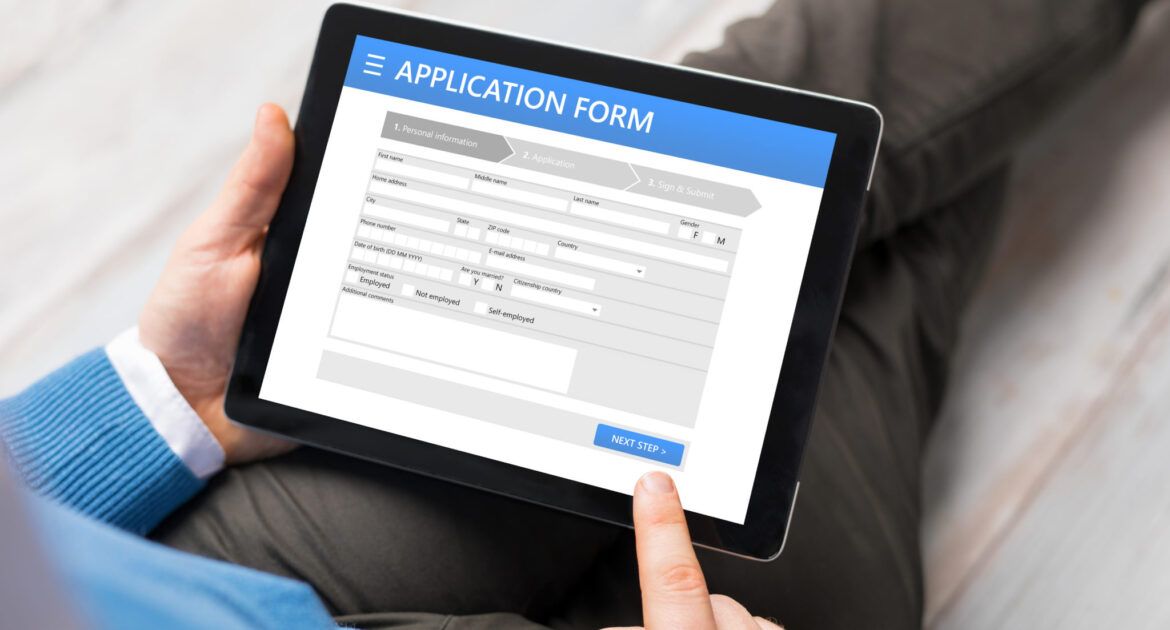If you are applying for a job at a Higher Education Institution or research body, you will almost certainly have to complete a lengthy online application form. This is the case even for internal applications. Often, you will be asked to attach your CV as well.
Most employers use the same online application form for every vacancy, from Professors to clerical assistants. You may be asked to fill in up to 12 pages of detailed information – some of which may not even seem relevant to your target job. This can be frustrating and time-consuming. Yet the online form is your key to securing an interview. Here are our tips on how to use the form to demonstrate your suitability and stand out from the crowd:
Know which sections matter
Many parts of the form are administrative and are only read by the HR department. Recruiters who shortlist the form tend to focus on:
The Career History section – so they can gauge the relevance of your work experience
The Personal Statement – which demonstrates your motivation and gives evidence about your skills and
The Academic Qualifications and Awards section – especially if the job is academic or research-based
These are the parts of the form worth spending time on.
Map your Skills and Experience
Before tackling the online application form, draw up a grid with each aspect of the person specification on the left. This should cover qualifications, experience, skills, and personal qualities and show which are essential and which desirable for the job. Look back at the job ad, and reflect on any conversations you have had with the recruiting manager to add in anything which you know to be important.
Now jot down what evidence you have for each of these criteria. This could cover work responsibilities, key achievements in your current and previous roles, formal qualifications, research activities, volunteer work, and personal interests. Use a highlighter to mark out the recruiter’s key criteria and those pieces of evidence which best demonstrate how you meet these. You must ensure that these pieces of evidence are prominently displayed and well-explained in the key sections of the form.
Write your CV first
You need to tailor the information about your qualifications, work history and interests in a way that highlights your suitability for this job, using your skills mapping exercise. This is easier to do in the CV initially. Once you have tailored your CV, you can simply lift the key information and copy it directly onto the online form.
Tailor your Career History section
When tailoring your CV and online form consider –
The order of information. The most relevant aspects of your job responsibilities, for example, would come first in your job sections.
Which aspects to include: Your descriptions of job roles do not have to cover every aspect of the role. Just pick out the most relevant parts to support your application and leave the rest out.
The amount of information. An earlier job role which is highly relevant to this post might have a longer explanation than a more recent but less relevant one.
The language used. Try to reword your CV to use the same language from the person specification. If the person specification asks for ‘Influencing skills with stakeholders’, use the same phrase when describing your previous jobs.
Use Supporting Documents
If the form does not have a section to cover some of your evidence (such as research interests, publications or volunteering) then attach a short appendix listing these. You can refer the recruiter to this in your supporting statement.
If the word count in the Career History or Qualifications sections is insufficient to present your evidence, then ensure these are well covered in your CV instead and refer the recruiter to this.
Do be careful not to overwhelm the recruiter with information, however – the clarity of your communication and the ability to argue your case succinctly may also be part of the selection criteria.
Argue your case
It is not enough to present evidence that you meet the essential, or even the desired, aspects of the person specification. You need to work out what differentiates you from the other likely candidates and consider what might be your USPs (Unique Selling Points). These could be that you have a particular blend of experience, a relevant qualification or career experience that few others have, especially strong networks within the department – or anything else which might give you an edge. Make sure you highlight these clearly in your supporting statement. This needs to answer the question “ Yes – but why should we hire you?”
Get across your enthusiasm
Recruiters want to hire people who are not only qualified, but keen. The Career Motivation question, or in the absence of this, the Supporting Statement allows you to showcase your enthusiasm for the role. Explain clearly what attracts you to this role in this particular department and (if you are an external applicant) in this institution.
Don’t assume this will be obvious to the recruiter (e.g. if the job is a promotion, or the institution is highly ranked). Relate your reasons for applying to your USPs and experience wherever possible a this reinforces your suitability. Demonstrate the research you have into the role (eg if you have spoken with the recruiting manager or colleagues) to show that you are seriously interested.
Finish with a statement about how much you are looking forward to an opportunity to discuss the role further at interview.





Leave a Reply